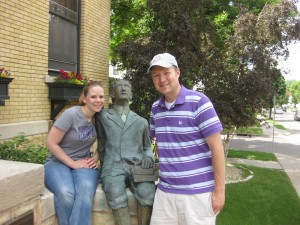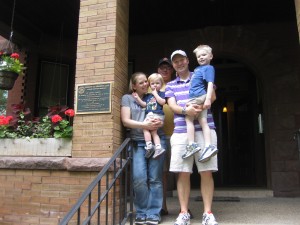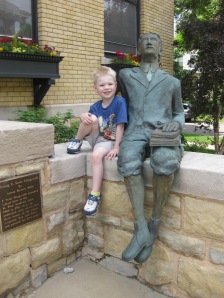Reading J.M. Coetzee’s Disgrace
There are, I think, at least three critical questions to ask about J.M. Coetzee’s Disgrace, the answers of which will greatly impact different individuals’ readings.
1. Is the violent act of violation in the middle of the novel linked to what has happened before it?
We are always subject to the evils of the world getting us. Often there is no apparent meaning in it happening: it is random. We all live at the mercy of forces beyond our control. And so it is possible that the violent robbery, beating, and rape that occurs may be one of those random acts of evil. The character of the victims matters no more than the context in which the act occurs. The action may have a context, a web of causes both clear and confusing, but that hardly matters to the act itself.
Yet in a work of literature, it is also possible that the violent act is thematically or aesthetically linked to the rest of the novel. Is there a thematic connection between the act and David Lurie’s scandal (in Lurie’s actions, in the procedure that brings him down, in his response to that procedure)? Is there something we are supposed to see between Lurie’s life and the violence inflicted on him, or on his daughter? Is the event foreshadowed? Does it fit into what has already occurred in the novel, or is it a strong, distinct break? Is the context of the violent act really what we are supposed to be seeing?
2. What does the author make of David Lurie?
Do we take Lurie’s own assessment, that he’s neither good nor bad? He certainly comes off rather badly in many parts. And of his escape into Romantic poetry and his opera about Byron–is this intellectualizing foolishness, or is it in this that there is meaning, and perhaps grace? Here too is ambiguity
3. In a book about disgrace, that seems concerned about the possibility of grace, is there grace?
The central place to look, I think, is in David’s work at the animal shelter, particularly in euthanizing dogs. For Bev Shaw there seems, in a hard necessary way, grace in the action of loving the animal that is about to be killed. And for David Lurie, who chooses to dispose of the bodies of the animals because (in ways he can’t seem to articulate to himself, if not understand) he wants the animals to have some sort of dignity, to not be alone even in that. So that is where we can look. But is there grace there? Or is it a pathetic attempt at it? I don’t know.
I can’t claim an answer to any of these questions, and when reading literature one must be comfortable with ambiguity, for the answers we seek while reading are answered aesthetically rather than logically. But if a reader begins to feel strongly in his or her particular reading a particular answer to one or more of these questions, that will strongly impact the fullness of the reading itself.
How did I come to be reading this book?
I read Elisabeth Costello years ago: I greatly enjoyed the discussions of animal rights (as one might expect I would), and found the essentializing of “writerness” at the end extremely irritating. Another friend once recommended Coetzee too me. I bought this on clearance at Half Price Books, and in an effort not to keep spending money on books that I don’t ever get to, I immediately read this book.
Without really feeling anything strongly against Coetzee, I don’t find myself terribly compelled to read any more of him.
I might add that 200 pages is about the perfect length of a novel. There was nearly a full year when I read no novels but Dostoevsky’s: it was all really, really long books, and I found myself deeply immersed in Dostoevsky’s world. All that is to the good of course: Dostoevsky’s is a fine fictional world to find oneself immersed in. Yet I realized that over the course of that time, I had encountered no novelists I hadn’t read yet, experienced no novels by anybody new. Reading for depth rather than breadth has its place, but one also wants to try read widely, to grasp the canon, to be able to keep up with the contemporary conversations. For that, reading a bunch of 200 page novels by different authors has a certain edge in variety over reading Demons followed by The Idiot followed by The Adolescent.






